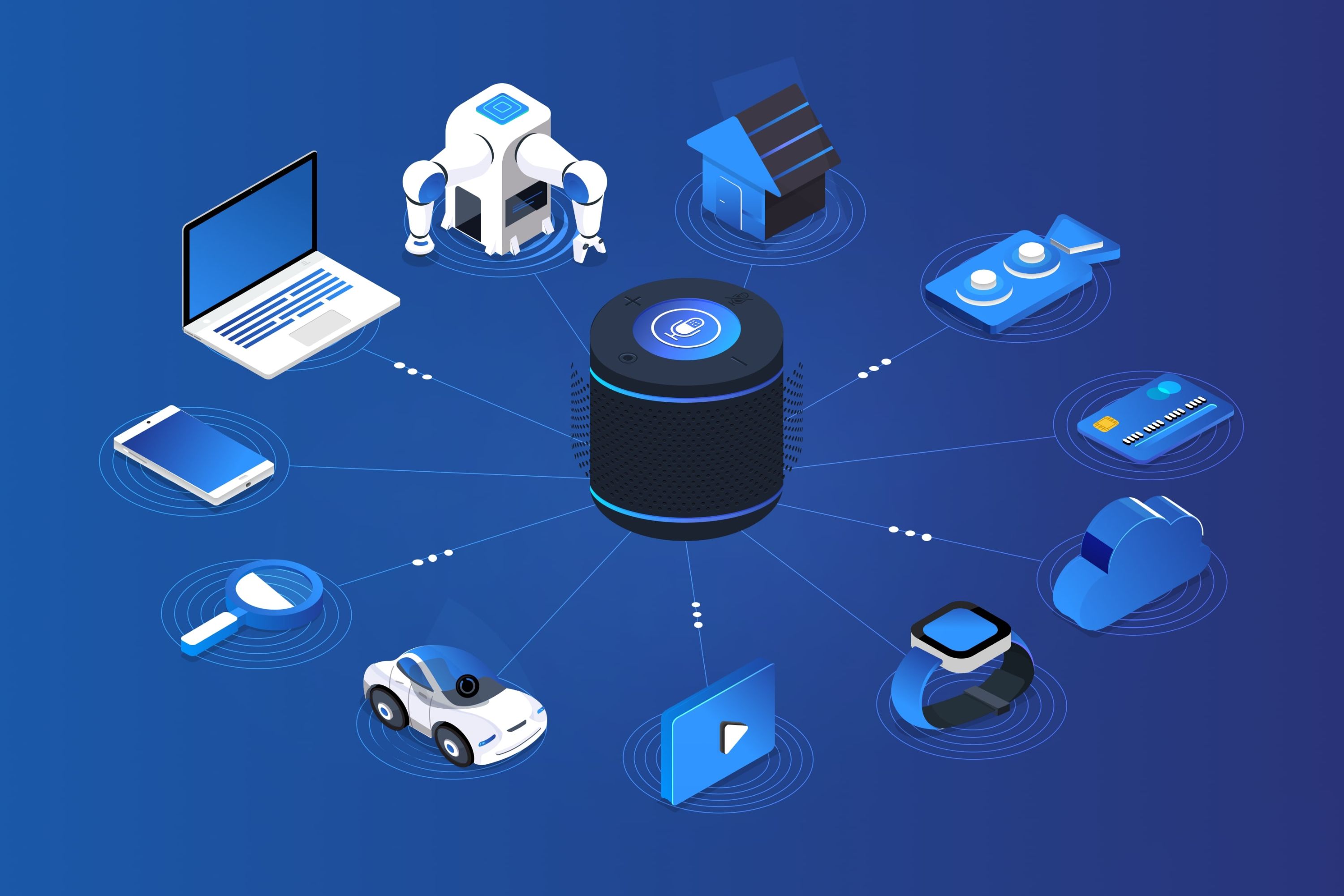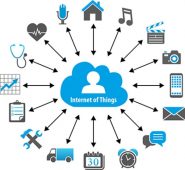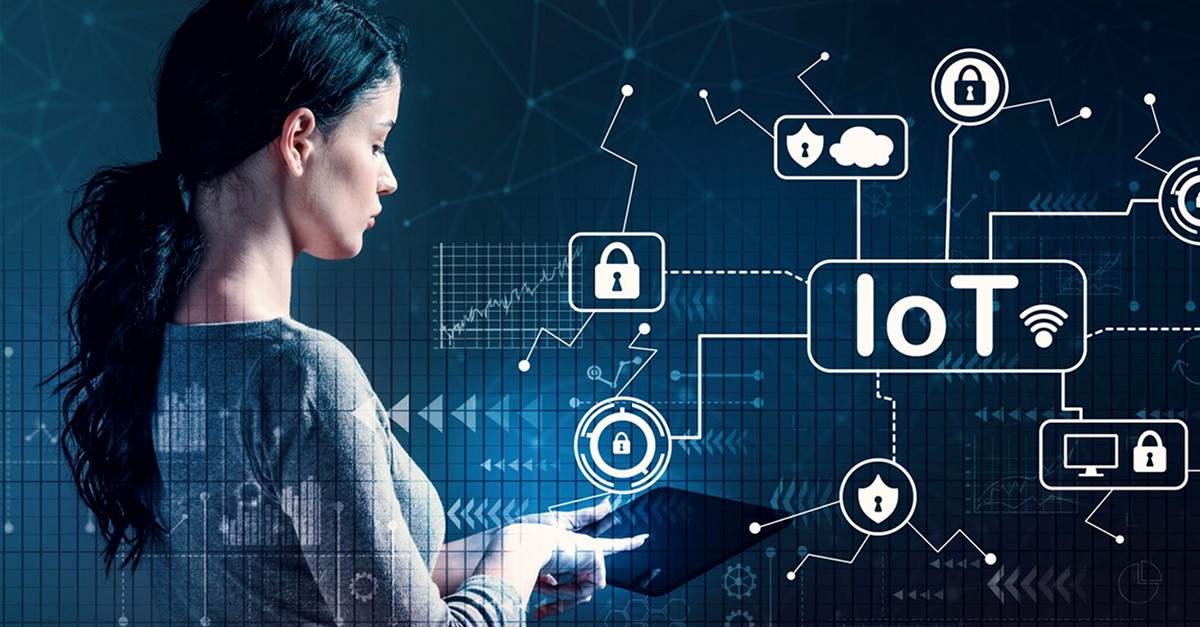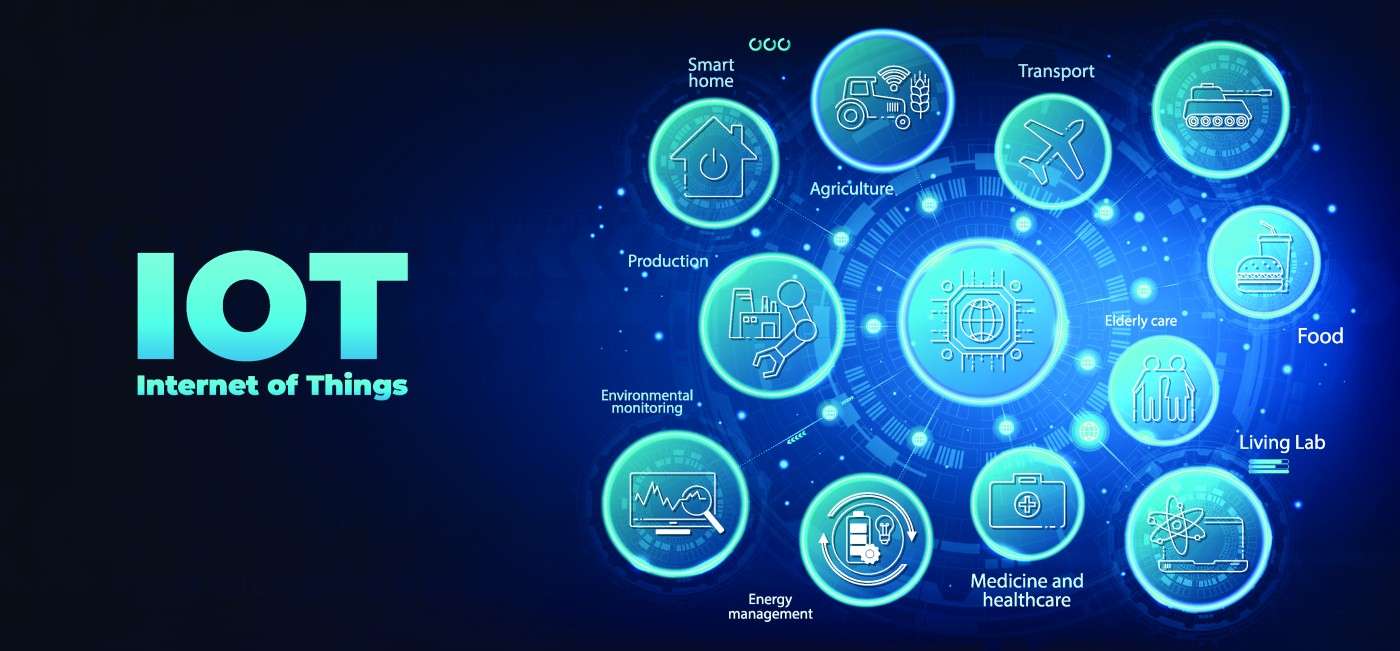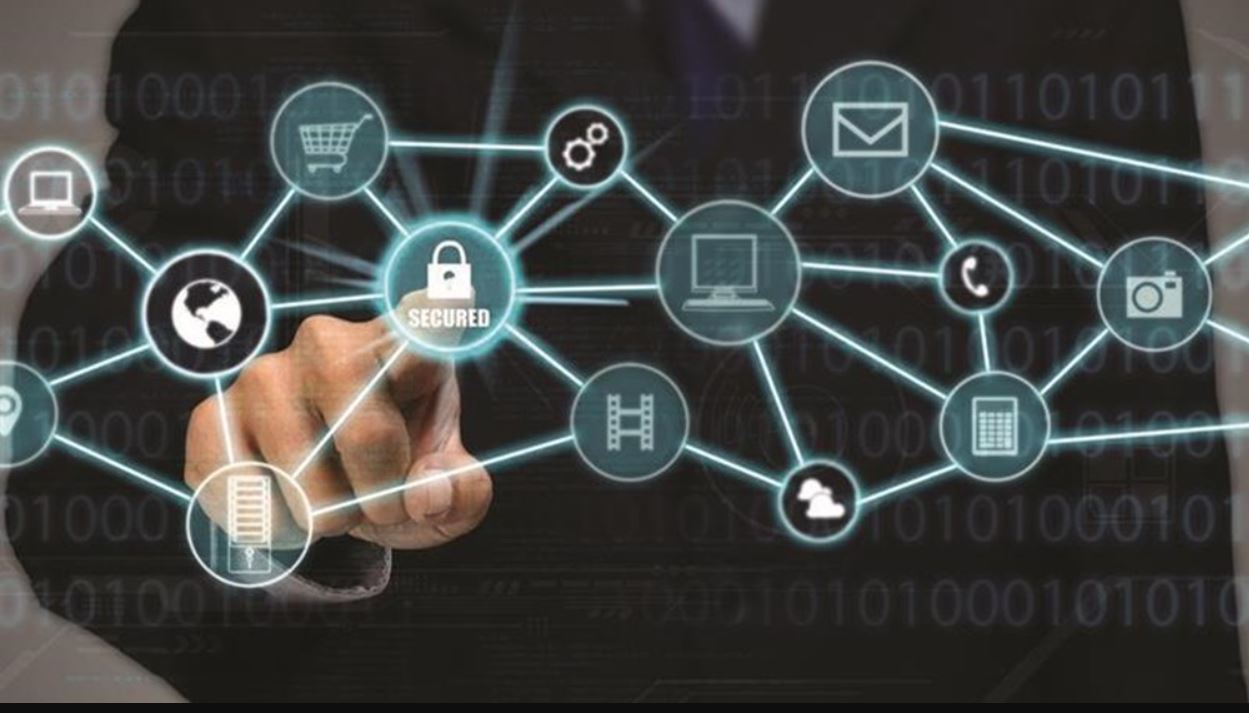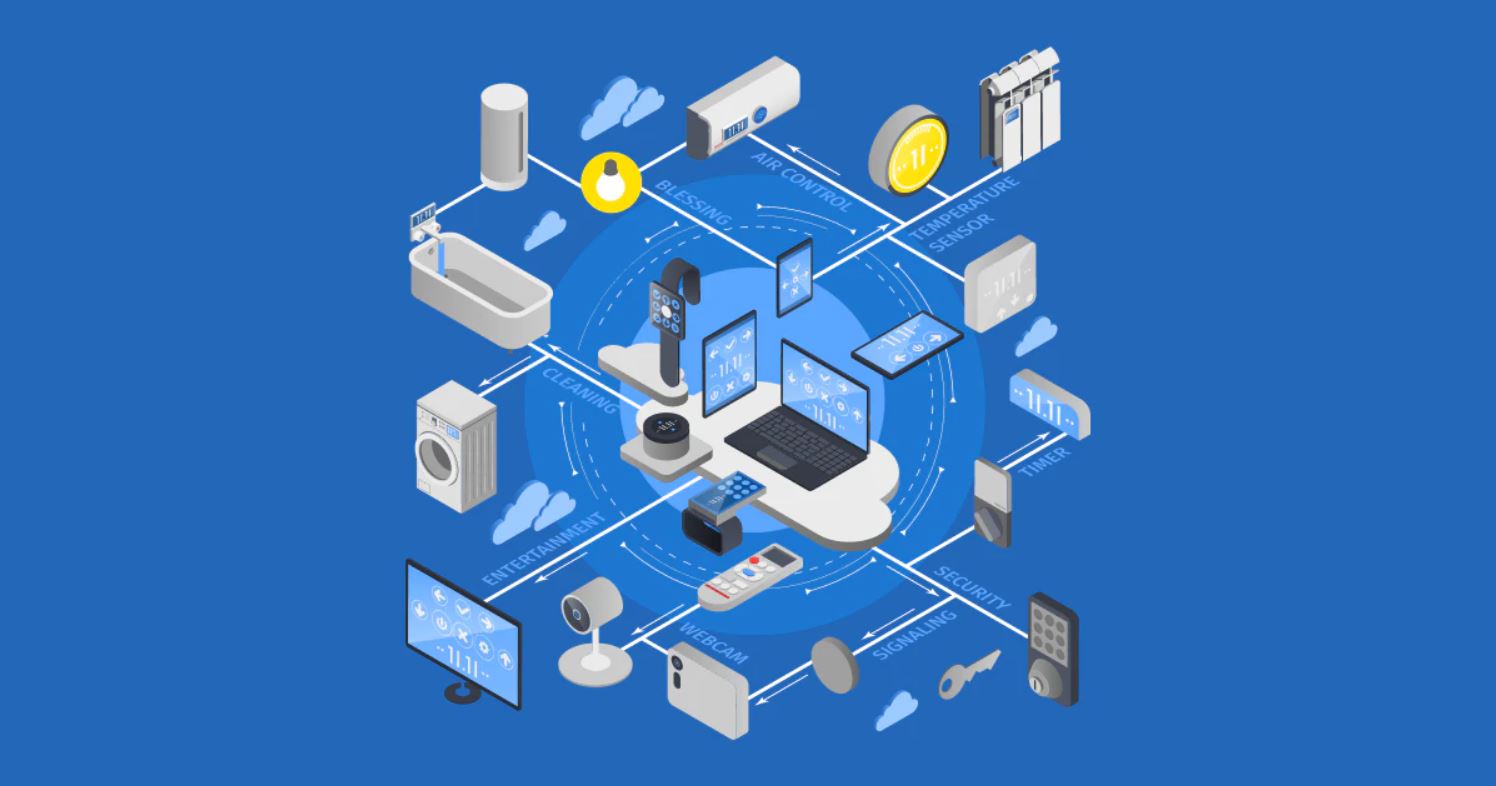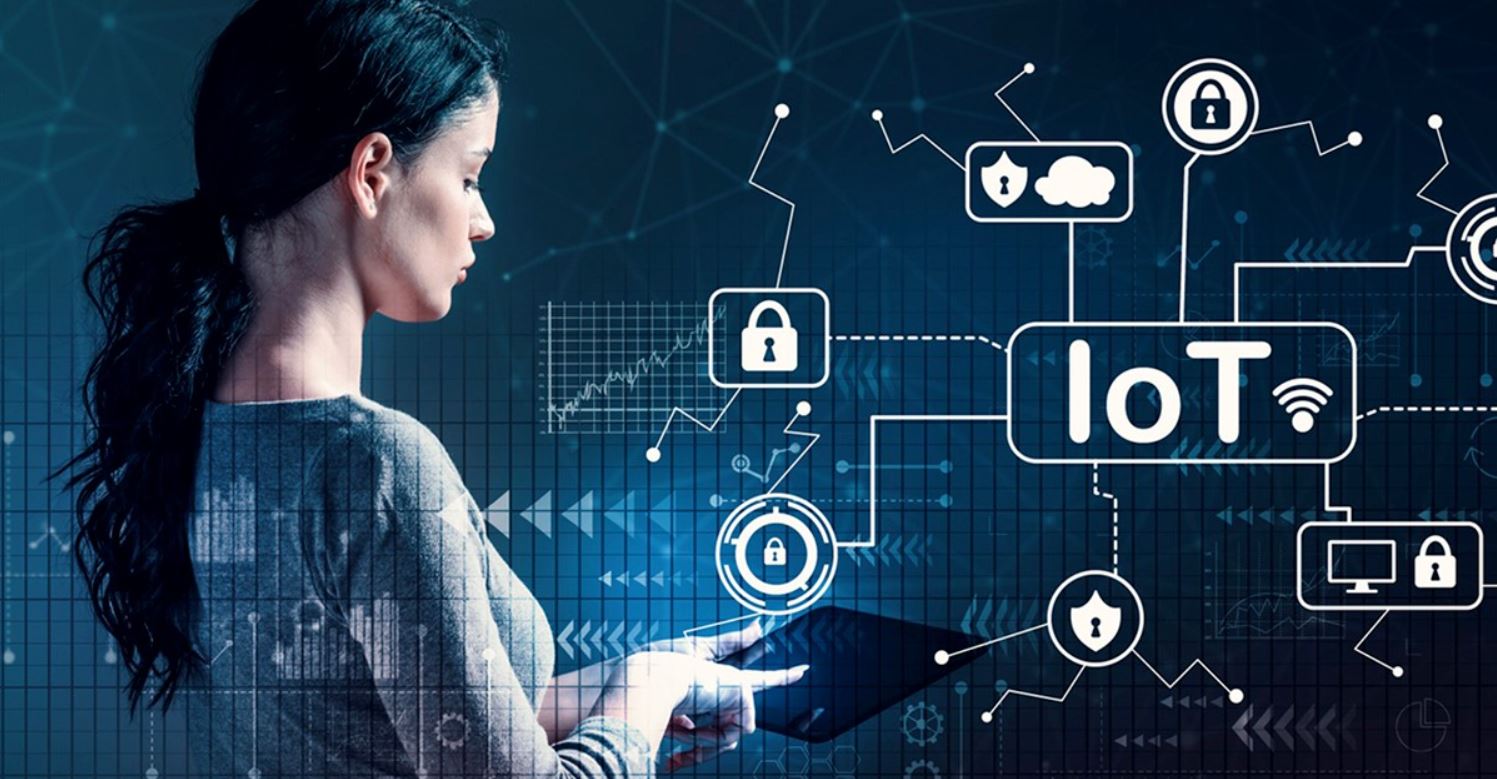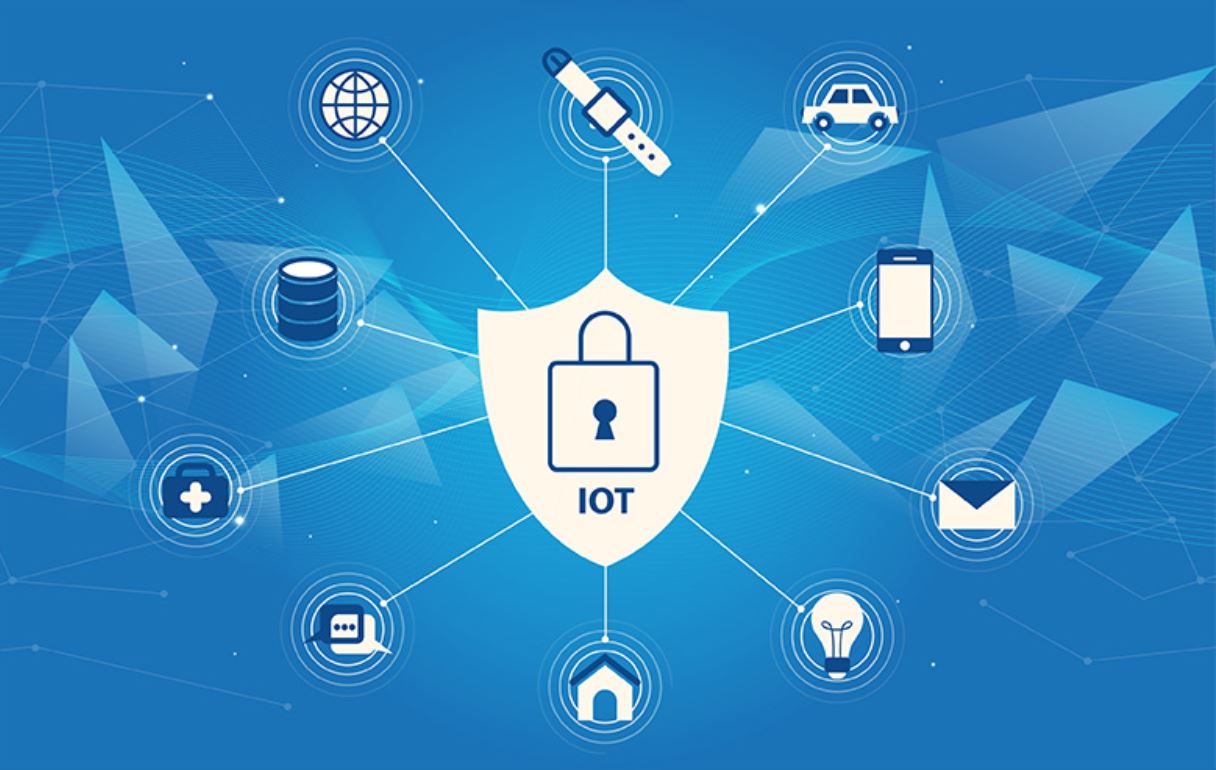What is the Internet of Things (IoT)?
The Internet of Things, commonly referred to as IoT, is a network of interconnected physical devices, vehicles, appliances, and other objects embedded with sensors, software, and network connectivity. These devices collect and exchange data, enabling them to interact and make intelligent decisions without human intervention.
By connecting everyday objects to the internet, IoT enables seamless communication and data sharing between devices, making our lives more convenient and efficient. The potential applications of IoT are vast and span across various industries, including healthcare, transportation, agriculture, manufacturing, and smart homes.
IoT devices range from simple, everyday objects such as thermostats, light bulbs, and smartwatches, to more complex devices like autonomous vehicles, industrial machinery, and smart city infrastructure. They are equipped with sensors, actuators, and processors to collect data, analyze it, and initiate actions based on predefined algorithms or user inputs.
The IoT ecosystem is built on a foundation of connectivity, cloud computing, and data analytics. These devices communicate with each other through the internet, sending and receiving data to cloud-based platforms where it is analyzed and turned into meaningful insights. This data can be used to optimize operations, enhance decision-making, and improve overall efficiency.
The Internet of Things has the potential to revolutionize industries by transforming the way we interact with objects and our environment. From improving healthcare outcomes through remote monitoring of patients to optimizing energy usage in buildings, IoT devices are driving innovation and creating new possibilities.
As the IoT continues to evolve, experts predict that the number of connected devices will skyrocket in the coming years. This growth presents both opportunities and challenges, including data privacy concerns, security risks, and the need for robust device management systems.
In the next section, we will explore the tremendous growth of IoT devices and the impact they are having on our lives and businesses.
Growth of IoT Devices
The growth of IoT devices has been exponential in recent years, and this trend is expected to continue in the foreseeable future. According to industry reports, there were an estimated 26.66 billion connected devices worldwide in 2019, and this number is projected to reach 75.44 billion by 2025.
The increasing adoption of IoT devices can be attributed to several factors. First and foremost, advancements in wireless communication technologies, such as 5G, have paved the way for faster and more reliable connectivity, enabling seamless integration of IoT devices into our daily lives.
Additionally, the decreasing cost of hardware components and the widespread availability of affordable internet access have made it more accessible for individuals and businesses to embrace IoT technology. This has resulted in a surge of IoT devices across various sectors, creating a network of interconnected objects and systems.
In the consumer market, IoT devices have become increasingly popular. Smart home devices like thermostats, security systems, and voice assistants have gained significant traction, allowing users to control and monitor their homes remotely. Wearable devices, such as fitness trackers and smartwatches, have also become commonplace, revolutionizing the way we track our health and fitness goals.
In the industrial and enterprise sectors, IoT devices have been instrumental in improving operational efficiency and reducing costs. Manufacturers are leveraging IoT sensors to monitor equipment performance, automate processes, and predict maintenance needs, leading to increased productivity and minimized downtime.
The transportation and logistics industry has also witnessed a substantial increase in the adoption of IoT devices. Connected vehicles with embedded sensors provide real-time data on fuel consumption, engine performance, and driver behavior, enabling fleet managers to optimize routes and improve overall efficiency.
Furthermore, the healthcare industry is leveraging IoT devices to enhance patient care and monitoring. Medical devices, such as remote patient monitoring systems and wearable sensors, enable healthcare professionals to remotely collect and analyze patient data, improving diagnosis accuracy and enabling timely interventions.
While the growth of IoT devices presents numerous opportunities, it also poses challenges. Managing a large number of connected devices and ensuring seamless interoperability can be complex. Additionally, data privacy and security concerns have emerged as significant roadblocks to widespread adoption.
Despite these challenges, the growth of IoT devices shows no signs of slowing down. As technology continues to advance, and businesses and consumers recognize the benefits of IoT, it is evident that we are entering an era where connected devices will play an increasingly vital role in our lives.
Types of IoT Devices
The Internet of Things (IoT) encompasses a wide range of devices that are connected to the internet, each serving a specific purpose and bringing unique benefits to users. Here are some common types of IoT devices:
- Smart Home Devices: These devices are designed to automate and enhance various aspects of a home. Examples include smart thermostats, lighting systems, door locks, security cameras, and voice assistants like Amazon Echo or Google Home.
- Wearable Devices: Wearable IoT devices, such as fitness trackers, smartwatches, and medical monitoring devices, are worn on the body to collect and transmit data related to health and physical activity. They provide valuable insights for personal fitness tracking, optimizing workouts, and monitoring vital signs.
- Connected Appliances: IoT devices have been integrated into a wide range of household appliances, including refrigerators, washing machines, coffee makers, and even ovens. These appliances can be remotely controlled and monitored, offering convenience and energy efficiency.
- Industrial IoT Devices: In industrial settings, IoT devices are used to optimize operations, improve safety, and increase productivity. Examples include connected sensors for monitoring equipment performance, smart energy systems for efficient power consumption, and asset tracking devices for supply chain management.
- Smart Healthcare Devices: IoT has transformed the healthcare industry, enabling remote patient monitoring, telemedicine, and patient data management. Devices like wearable monitors, insulin pumps, and connected medical devices allow healthcare professionals to remotely monitor patients, analyze data in real-time, and provide timely interventions.
- Smart City Infrastructure: IoT devices are deployed in cities to improve the quality of life and enhance urban services. These devices include smart traffic lights, parking sensors, waste management systems, and environmental monitoring sensors. They help optimize city resources, reduce congestion, and create sustainable environments.
- Connected Cars: The automotive industry has embraced IoT technology to create connected cars that can provide real-time navigation, diagnostics, and entertainment services. IoT-enabled cars can also communicate with other vehicles and infrastructure, creating a safer and more efficient driving experience.
- Smart Agriculture Devices: IoT devices play a crucial role in modernizing agriculture by monitoring soil moisture, irrigation systems, temperature, and humidity. Farmers can optimize crop yields, reduce water usage, and take preventive actions based on real-time data.
These are just a few examples of the wide array of IoT devices available today. As technology continues to evolve, new types of devices will emerge, enabling further innovation and integration in various industries.
Uses of IoT Devices
The widespread adoption of Internet of Things (IoT) devices has resulted in a multitude of applications across various industries. These devices have transformed the way we live, work, and interact with our surroundings. Here are some key uses of IoT devices:
- Smart Home Automation: IoT devices have revolutionized home automation, allowing users to control various aspects of their homes remotely. From adjusting thermostats, turning on lights, and locking doors to managing security systems and monitoring energy usage, smart home devices offer convenience, energy efficiency, and improved security.
- Healthcare Monitoring: IoT devices have facilitated remote patient monitoring, enabling healthcare providers to closely monitor patients outside of traditional healthcare settings. Wearable devices with sensors can track vital signs and provide real-time data for disease management, early detection of health issues, and adherence to treatment plans.
- Industrial Optimization: IoT devices are used in industries to enhance productivity, streamline processes, and optimize operations. Connected sensors can monitor equipment performance, detect anomalies, and predict maintenance needs, reducing downtime and maximizing efficiency. IoT-enabled asset tracking systems also help improve supply chain management and inventory control.
- Smart Energy Management: IoT devices contribute to energy conservation by monitoring and optimizing energy usage in residential, commercial, and industrial settings. Smart meters collect data on electricity consumption, allowing users to better understand their usage and make informed decisions to reduce energy waste and lower costs.
- Transportation and Logistics: IoT devices enable smarter and more efficient transportation and logistics operations. Connected vehicle systems provide real-time tracking, route optimization, and vehicle maintenance alerts. This improves fleet management, reduces fuel consumption, and enhances overall logistics operations.
- Agricultural IoT: IoT devices are transforming agriculture by providing real-time monitoring and precision farming capabilities. Farmers can monitor soil moisture, temperature, and humidity, enabling efficient irrigation and nutrient management. This helps optimize crop yields, reduce water usage, and minimize the environmental impact of agriculture.
- Environmental Monitoring: IoT devices are used to monitor and analyze environmental factors such as air quality, water quality, and noise levels. This data enables authorities to take proactive measures to improve environmental conditions and mitigate pollution.
- Smart Cities: IoT devices are integral to the concept of smart cities, where interconnected systems work together to improve urban living. Smart traffic management systems reduce congestion, while parking sensors optimize parking availability. Connected streetlights and waste management systems improve energy efficiency and sustainability.
These examples highlight the diverse range of applications for IoT devices across various sectors. As the technology continues to evolve, IoT devices will play an increasingly important role in improving efficiency, enhancing data-driven decision-making, and creating smarter and more sustainable environments.
Challenges of IoT Device Management
The proliferation of Internet of Things (IoT) devices has brought forth a new set of challenges in managing and maintaining these interconnected systems. Effective IoT device management is crucial for ensuring seamless operations, security, and scalability. Here are some of the key challenges faced in IoT device management:
- Device Connectivity: The sheer number of IoT devices and their diverse connectivity options can make managing connectivity a complex task. Devices may operate on different communication protocols, making it challenging to ensure smooth interoperability and seamless data exchange between devices and IoT platforms.
- Data Management and Analytics: IoT devices generate an enormous amount of data, which must be efficiently managed, stored, and analyzed. Extracting meaningful insights from this vast volume of data requires robust data management systems and advanced analytics capabilities. Organizations must invest in scalable and secure infrastructure to handle the increasing data demands.
- Security and Privacy: IoT devices often collect and transmit sensitive data, making security and privacy a critical concern. IoT networks can be vulnerable to hacking, data breaches, and unauthorized access. Ensuring end-to-end security, implementing encryption protocols, and regularly updating software are essential to mitigate security risks and protect user privacy.
- Device Compatibility and Integration: IoT devices are manufactured by different vendors with varying specifications, making device compatibility and integration a significant challenge. The ability to connect and streamline multiple devices with different protocols and standards is crucial for seamless integration and effective device management.
- Device Monitoring and Maintenance: Proactive monitoring and maintenance of IoT devices are essential to ensure their optimal performance. Monitoring device health, detecting anomalies, and identifying potential issues require robust management systems and effective processes. Regular maintenance and software updates are necessary to address vulnerabilities and enhance device efficiency.
- Scalability and Interoperability: As the number of IoT devices continues to grow exponentially, managing the scalability and interoperability of these devices becomes increasingly complex. Scaling IoT deployments to accommodate large-scale implementations and ensuring interoperability between devices, platforms, and ecosystems present significant challenges that need to be addressed.
- Lifecycle Management: The lifecycle of IoT devices involves various stages, from deployment to retirement. Managing these stages efficiently is crucial for organizations. This involves tracking device inventories, managing firmware updates, provisioning devices, and securely decommissioning devices at the end of their lifecycle.
Addressing these challenges requires a comprehensive approach that includes robust device management systems, standards and protocols, effective monitoring tools, and a focus on security and privacy. As IoT continues to evolve, device management solutions will become even more critical in enabling the seamless operation and management of large-scale IoT deployments.
Security Risks in IoT Devices
The widespread adoption of Internet of Things (IoT) devices has brought about numerous benefits, but it has also introduced significant security risks. IoT devices often collect and transmit sensitive data, making them lucrative targets for cybercriminals. Understanding and mitigating security risks is crucial to protect users’ privacy and ensure the integrity of IoT systems. Here are some key security risks associated with IoT devices:
- Weak Authentication and Authorization: Many IoT devices ship with default usernames and passwords that are widely known or easily guessable. This makes it relatively easier for attackers to gain unauthorized access to the device, and subsequently, the network it is connected to. Strong authentication mechanisms and the ability to change default credentials are essential to mitigate this risk.
- Insecure Network Communications: IoT devices often rely on wireless communication protocols such as Wi-Fi, Bluetooth, or Zigbee. Weak encryption, improper implementation of protocols, and lack of secure communication channels can expose sensitive data to interception, tampering, or unauthorized access. Employing strong encryption and secure network connections can help safeguard data during transmission.
- Device Firmware Vulnerabilities: IoT devices typically run on firmware, which may contain vulnerabilities that can be exploited by attackers. Lack of regular updates and patches leave devices exposed to known vulnerabilities. Regular firmware updates and the ability to remotely patch devices are necessary to address vulnerabilities and ensure the security of IoT devices.
- Insufficient Data Encryption: IoT devices often collect and transmit sensitive data, such as personal information, health-related data, or financial details. Failure to encrypt this data at rest and in transit can expose it to unauthorized access, leading to data breaches and privacy violations. Implementing robust encryption algorithms and cryptographic protocols is essential to protect sensitive information.
- Physical Vulnerabilities: IoT devices deployed in the physical world can be at risk of physical tampering or theft. Unauthorized access to IoT devices can potentially disrupt their functionality, compromise data security, or even use them as a gateway to attack the larger network. Physical security measures, such as tamper-resistant packaging, anti-tampering mechanisms, and secure mounting, can help mitigate these risks.
- Lack of Standardization: The lack of standardized security measures across different IoT devices can create inconsistencies and vulnerabilities. Varying security practices and protocols make it challenging to implement a unified security framework and ensure the reliability and trustworthiness of IoT systems. Establishing and adhering to industry-wide security standards is crucial to enhance overall security in the IoT ecosystem.
Addressing these security risks requires collaboration among IoT device manufacturers, software developers, network providers, and users. Robust security measures, such as strong authentication mechanisms, secure communication channels, regular firmware updates, and data encryption, must be implemented to protect the privacy and integrity of IoT devices and the networks they are connected to.
Future of IoT Devices
The Internet of Things (IoT) has already made a significant impact on various industries and has become an integral part of our daily lives. As technology continues to advance, the future of IoT devices holds exciting possibilities. Here are some trends and innovations that are shaping the future of IoT:
- 5G Connectivity: The deployment of 5G networks will revolutionize the capabilities of IoT devices. With faster speeds, lower latency, and higher capacity, 5G will enable real-time data processing and seamless connectivity on a massive scale. This will unlock new possibilities for IoT applications that require instantaneous data transmission, such as autonomous vehicles and smart cities.
- Edge Computing: Edge computing brings data processing closer to the source, reducing latency and enhancing the efficiency of IoT systems. By processing and analyzing data at the device or edge level, rather than relying solely on cloud-based platforms, edge computing enables faster decision-making, improved security, and reduced bandwidth requirements. This trend will continue to grow, enabling more robust and autonomous IoT devices.
- Artificial Intelligence (AI) Integration: The convergence of IoT and AI technologies will drive significant advancements in predictive analytics, machine learning, and automation. IoT devices will incorporate AI capabilities to analyze vast amounts of complex data, enabling smarter decision-making, proactive problem-solving, and personalized user experiences. AI-powered IoT devices will become more intuitive, adaptive, and capable of autonomously adapting to changing circumstances.
- Blockchain Technology: Blockchain technology offers secure and transparent data management, making it an ideal solution for IoT devices. Blockchain can enhance the security, authenticity, and integrity of IoT data and enable decentralized communication and trust between devices. It can also facilitate secure and efficient transactions between IoT devices, enabling new business models and ecosystems to emerge.
- Interoperability and Standardization: As the number of IoT devices continues to grow, interoperability and standardization will become increasingly important. Efforts to establish common protocols and frameworks will enable seamless integration between devices, platforms, and ecosystems. This will result in more cohesive and efficient IoT systems, fostering collaboration and innovation across industries.
- Focus on Privacy and Security: With the growing concerns around privacy and data security, the future of IoT devices will prioritize robust privacy measures and security protocols. Encryption, user consent mechanisms, and secure authentication will become standard features in IoT devices to protect sensitive data and ensure trust between users and devices.
- Expansion of Industry-Specific Applications: IoT devices will continue to revolutionize specific industries, such as healthcare, agriculture, manufacturing, and transportation. Healthcare providers will embrace wearable devices and remote patient monitoring for accurate diagnoses and personalized treatments. Agriculture will benefit from IoT-enabled precision farming techniques, optimizing resource utilization and crop yields. The manufacturing sector will leverage IoT devices for predictive maintenance and streamlined operations, while the transportation industry will witness innovations in autonomous vehicles and intelligent traffic management systems.
The future of IoT devices holds immense potential to transform our lives and industries. As technology evolves, we can expect increasingly intelligent, interconnected, and secure IoT devices that will continue to shape the way we interact with the world around us.
Conclusion
The Internet of Things (IoT) has revolutionized the way we live, work, and interact with our environment. The seamless connectivity and data exchange between IoT devices have transformed various industries, enhancing efficiency, improving decision-making, and enabling new possibilities. From smart home devices that automate daily tasks to industrial IoT systems that optimize operations, the impact of IoT devices is undeniable.
As the number of IoT devices continues to grow, some challenges and risks need to be addressed. Device management, security vulnerabilities, and data privacy concerns require ongoing attention and innovation. However, with advancements in connectivity, edge computing, artificial intelligence, and blockchain technology, these challenges are being mitigated, leading to more robust and secure IoT ecosystems.
The future of IoT devices holds immense promise. With the deployment of 5G networks, edge computing capabilities, and the integration of artificial intelligence, IoT devices will become even more powerful, intelligent, and autonomous. Interoperability and standardization efforts will further enhance the seamless integration of devices and platforms, fostering collaboration and innovation.
Industry-specific applications of IoT will continue to shape various sectors, bringing improvements in healthcare, agriculture, manufacturing, transportation, and more. The expansion of IoT devices into different domains will have a profound impact on our lives, enabling personalized experiences, precision monitoring, and sustainable practices.
In conclusion, the Internet of Things has transformed the way we interact with technology and our surroundings. IoT devices have become an integral part of our lives, offering convenience, efficiency, and new possibilities. While challenges and risks exist, ongoing advancements and technological innovations continue to pave the way for a future where IoT devices will continue to revolutionize industries, improve our lives, and create a connected world.







